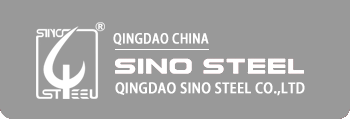The steel market will enter a phased adjustment in the short term
2020-08-12
The steel market will enter a phased adjustment in the short term
In the past week (August 3rd to August 7th), the domestic steel market experienced a wave of moderate rises and achieved a "good start" in August. The prices of steel products such as rebar and hot-rolled coils all hit new highs since February, returning to the levels before the outbreak of the new crown pneumonia. The author believes that this is not only due to the stable recovery of the macroeconomic environment, but also from the strong support of the fundamentals of the steel market. Since July, the steel market as a whole has shown a stable and positive operating situation. This momentum is expected to continue in August and September, but it will also face certain shock adjustments in the middle.
First, the market fundamentals are good, but the contradiction between mineral and steel has deepened. Overall, the market fundamentals performed well last week, the supply did not increase significantly, inventories continued to decline, and steel consumption increased significantly. But from the perspective of the entire black industry chain, the contradictions are still prominent. From the perspective of the increase, the price of steel rose by less than 1.5%, but the price of iron ore increased by 3.4%, and even the price of PB fines increased by more than 5%, which shows that the momentum of iron ore is strong.
Due to the large differences in the pace of changes in the price of rebar and iron ore, the screw-to-ore ratio (the ratio of the price of rebar to the price of iron ore) hit a record high in the past 6 years. Based on this, it is expected that the profits of the steel industry will be further compressed. Although revenue is growing, actual profits will fall.
From the perspective of iron ore fundamentals, port inventories continue to increase. Since the lowest point on June 19, port stocks have increased by 7.86 million tons in nearly one and a half months. In July, my country imported 112.6647 million tons of iron ore, an increase of 10.965 million tons or 10.8% from the previous month. This is the second time that iron ore imports exceeded 100 million tons in June. At the same time, the domestic blast furnace operating rate has returned to a high level during the year. Statistics from industry organizations show that the blast furnace operating rate of 247 steel plants in my country has reached 91.41%, and the national blast furnace capacity utilization rate has reached 94.8%. Based on this, the author predicts that there will be little room for improvement in later iron ore consumption. If steel prices continue to rise in the later period, iron ore prices may be able to maintain a certain high, but the increase is also very limited. If steel prices loosen, iron ore prices may fall even faster.
Second, this round of rising prices is mainly affected by the international commodity market atmosphere, especially the sharp rise in the prices of metal commodities. Against the background of global capital easing and the weakening of the U.S. dollar, the influx of capital into the metal market has greatly stimulated and promoted ferrous metals and related products.
Third, the market presents the characteristics of "strong futures and weak spot". As iron ore enters the delivery month in September, the frequency of futures price fluctuations will further increase, and the fluctuation range will also increase.
Overall, the author believes that the steel market will enter a phased adjustment in the short term, and the overall stability and improvement will not change.
Previous Page:7.30 Steel Industry News
Next Page:October and November steel price trend
CONTACT US
We're always working to expand the boundaries of what's possible. Stay up-to-date with the latest news, announcements and stories from SINO STEEL.
PRODUCT INQUIRY
Give us a few details about yourself and the demand requirements of products, we will reply you as soon as possible.






